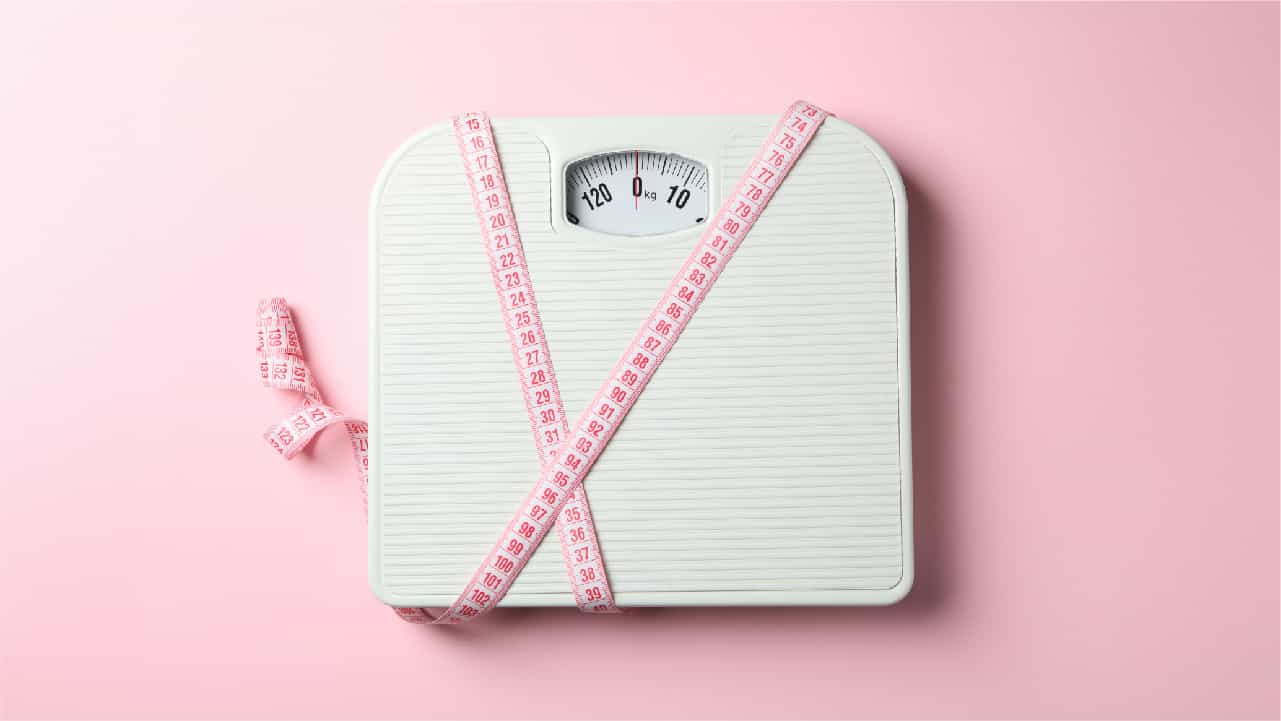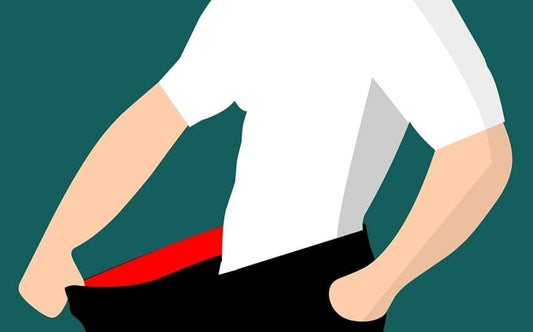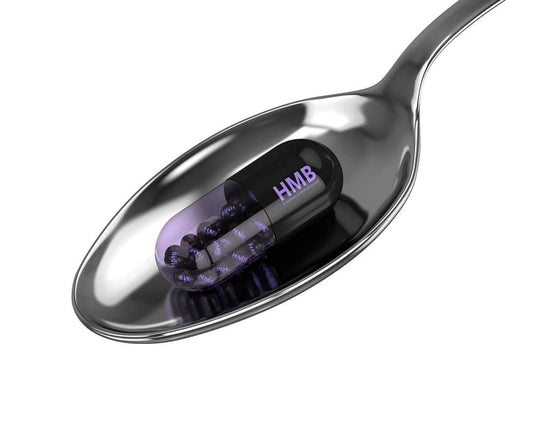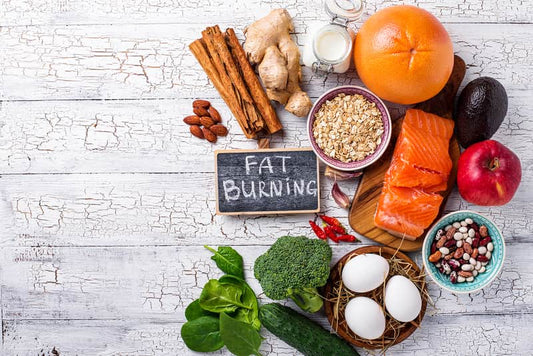Losing body fat is one of the most sought-after goals. Achieving that “summer body”, getting lean, building muscle, or simply wanting to live a healthier lifestyle - these are all specific goals that fall under the same umbrella of fat loss.
However, fat loss is no easy feat. Even once it’s achieved, it can be hard to sustain. A strict commitment to the cause is required. Cutting carbohydrates, meticulously measuring macros, training 7 days a week - who can realistically sustain that?
Even attempting to uphold this mindset, and the habits that go with it can be very problematic for physical and mental health.
That’s why it’s key to pick attainable and realistic goals.
Trying to maintain a low body fat percentage can be detrimental to your health and wellbeing. Here in this article, we discuss what is a body fat percentage, how to achieve it, how to measure it, and how to estimate body fat for the best, most sustainable results!
Firstly, let’s take a look at exactly what our body fat is made up of!
An Introduction to Body Fat

There are 3 types of body fat: essential fat, subcutaneous fat, and visceral fat.
Essential fat represents the minimum amount of fat we need to survive. We need enough body fat for insulation, organ protection, and to allow us to absorb key vitamins.
Subcutaneous fat is the fat we find lying directly under our skin and is the type of fat we refer to when we talking about fat loss.
Visceral fat is the type of fat we cannot see. This fat surrounds our organs and is considered the dangerous type of fat that can cause many health problems if there is too much of it. When we lose body fat, we are losing both subcutaneous and visceral fat.
Having a high body fat percentage can also pose significant health risks, including increased chances of developing cardiovascular diseases and diabetes.
Conversely, having too little body fat can also be detrimental to health. Low body fat percentages are associated with an increased risk of nutrient deficiencies, decreased muscle mass, and heart problems.
The key is to strike the right balance with our body fat percentage by finding a healthy number that works for us personally!
So, what is a healthy body fat percentage?
What is a Healthy Body Fat Percentage?
Unfortunately, there is no magic number when it comes to body fat percentage. Though, there are guidelines!
First off, anything over 32% body fat for a woman and 25% body fat for a man is classified as obesity, so ideally we want to be trying our best to be staying under these percentages.
A healthy body fat percentage for women ranges from 25-31%, which is considered acceptable. For men, this range is 18-24%.
If you want to achieve major improvements in your body composition, you may even want to aim for lower numbers than this.
Women who tend to be very physically active can manage to have a body fat percentage of 21-24%, while men are around 14-17%. This is also considered sustainable under these lifestyle conditions.
Attempting to achieve the lowest body fat percentage ever can have health implications.
It is important to note that some individuals may have higher body fat percentages and still be healthy. There are also challenges in accurately measuring body fat, and BMI does not account for differences in lean muscle, bone mass, or fat distribution.
We also have something called essential fat - which is the barest essential minimum needed for you to stay healthy. For women this body fat percentage is between 10-13%, and for men it’s a very low 2-5%.
Nobody should ever go below these percentages.
Andreas Munzer, an Austrian bodybuilder was thought to have the lowest body fat percentage ever. His autopsy reported a body fat percentage of zero. It’s speculated that he died from multiple organ failure.
Fat plays a key role in our body. And even maintaining very low percentages for a long period of time may be harmful. So it’s important to simply aim for the healthy ranges and make small adjustments to improve body composition, if you feel you want to achieve that!
Body Fat Percentage Vs. Body Mass Index: What's the Difference?

Body mass index, or BMI, is a medical concept that’s been around for decades. Many people wonder if BMI and body fat percentage are essentially the same thing, but they are actually very different.
Your body fat percentage is a measure of how much of your total body weight is comprised of fat, as opposed to non-fat (muscle, bone, organs, etc.).
Your BMI, on the other hand, is a method of figuring out whether or not your weight is healthy relative to your height. While many people would say this is a good indication of whether you have too much or too little body fat, it’s not truly that accurate!
BMI only takes into consideration your weight and height, so it can’t actually accurately measure your body composition. This is why accurately measuring a person's body fat percentage is important, as it provides a better understanding of their overall health.
This is particularly true for bodybuilders who typically have more muscle and lean body mass, resulting in a heavier weight and being categorized as “obese” according to the BMI chart.
If you want to measure your body fat, you’re going to have to measure it directly!
Methods of Measuring Body Fat

The fastest and most efficient way to measure body fat at home or at the gym is with skinfold calipers. This tool measures the thickness of your skin, including underlying fat mass, which then gives you an idea of the amount of body fat you have.
While this method should ideally be done by a registered professional, you can still do it yourself provided you're following the same instructions each time under the same conditions to maintain consistency and limit any potential errors.
There are also other ways to measure body fat more accurately, though you would only find these methods in a fitness or medical centre that offers these services.
Some other ways to measure body fat include:
-
DEXA scan - uses X-ray to measure lean mass and bone density
-
Hydrostatic weighing - underwater weighing or hydrodensitometry
-
Bioelectrical impedance analysis (BIA) - uses electrical impulses to measure body fat
-
Air displacement plethysmography (Bod Pod) - measures your weight and volume to determine fat mass
-
3D body scanners
Additionally, measuring waist circumference can provide insights into health risks, especially when considering that men with a two percent body fat level are at the lower end of essential fat required to function properly. This highlights the importance of evaluating not just total body fat, but also its distribution and the specific health implications tied to maintaining such a low body fat percentage.
While these methods may be more accurate, they can often be costly and difficult to access. Additionally, they have a similar error rate to skinfold calipers (if the measurements are done by a professional).
However, we shouldn't always get too hung up on the exact number. Rather, if you're attempting to make changes to your diet and lifestyle, using a consistent method of measuring body fat to observe trends overtime would be more beneficial than just focusing on the number itself.
How to Lower Body Fat Percentage
So, if you have recently measured your body fat and are looking to make changes to decrease this number, the next step is figuring out how to do this!
Remember, try not to use just one measure of progress (body fat). Throughout your fat loss journey, you want to also be focusing on other measures of progress, such as how you feel, how you're performing in the gym, how you're sleeping, changes in measurements, how your clothes fit, and increases in energy.
Weight Loss Vs Fat Loss

Our total body weight is made up of fat mass and lean mass, such as water weight, bones, muscle, and organs.
When we talk about fat loss, for most people it means reducing body fat, rather than just losing weight. This is what we refer to and focus on when we talk about fat loss. We don't really want to be focusing too much on weight loss, as there are a number of factors which contribute to our ever-changing weight and daily fluctuations.
The key to improving your body composition is losing fat while building muscle, and here are some targeted ways you can do that.
HIIT for Fat Loss

HIIT, or high-intensity interval training, is alternating short bursts of high intensity exercise with slightly longer periods of low intensity.
The goal is to spend 20 to 90 seconds working as hard as you possibly can to increase your heart rate, then proceeding to back off a little to allow for a quick recovery before you repeat the process.
Studies have shown that HIIT can increase your metabolic rate and reduce body fat better than most types of exercise. Opting to do a few HIIT workouts per week may be optimal for fat burning!
Resistance Training for Fat Loss

Alongside HIIT, you may also want to incorporate resistance training into your schedule, otherwise known as strength or weight training.
This method of training can help improve your body composition by helping you to build muscle and burn fat simultaneously.
Nutrition Tracking
Losing fat requires a balance between regular exercise and movement, and nutrition.
However, just because regular exercise would play a big role in improving body composition, this doesn't mean that you can exercise to offset hours of overindulging.
You only spend 1 or 2 hours in the gym, the remainder of the day is essentially spent sleeping or eating!
If you want to maximize fat loss, it's important to consider your nutrition - calories and macronutrients.
Tracking calories, and sometimes even macros, can be helpful in keeping you on track with your diet!
Eat the Rainbow

On top of tracking your food intake to ensure you stay on track with the quantity of food you're consuming, it's also essential to consider the quality of food you take in too.
While you can still say what you enjoy and get results, there is an increased importance on filling yourself up with whole foods, fruits, vegetables, grains, and other healthy sources of nutrients.
These kinds of foods will not only support your general health, but will make fat loss easier by keeping you fuller for longer and balancing your blood sugar.
Manage Your Stress Levels

Moving away from diet and exercise, stress levels are also a key variable to consider for fat loss.
When we are chronically stressed, we will naturally produce more cortisol (stress hormone) than we truly need. This can wreak havoc on the body.
High cortisol levels can make our body store more fat, potentially leading to health problems later down the line.
Manage your stress by saying no more often, striking a positive work-life balance, and regularly practicing things like breathing and meditation.
Sleep

Sleep plays a key role in weight maintenance, much to many people's surprise!
There have been numerous studies linking poor sleep to weight gain, so this is a variable just as important to address as food and exercise.
When you don't get enough sleep, you won't move as much during the day. Additionally, being tired makes you more susceptible to binge eating and skipping workouts.
This simply does not go hand in hand with fat loss!
Try to stick to a regular sleep routine, exercise regularly, and keep your room dark and cool to allow you to drop off easier.
Take-Home Message
There is no one-size-fits all to diet and exercise, nor is there a perfect number around body fat percentage. While there are plenty of guidelines and advice on body fat, fat loss, and maintaining a healthy diet and lifestyle, it ultimately comes down to what you can personally adhere to.
After all, the best diet is the one you can adhere to, as without the consistency of checking off daily positive habits that work best for you, you may struggle with getting the results you're longing for.
References














